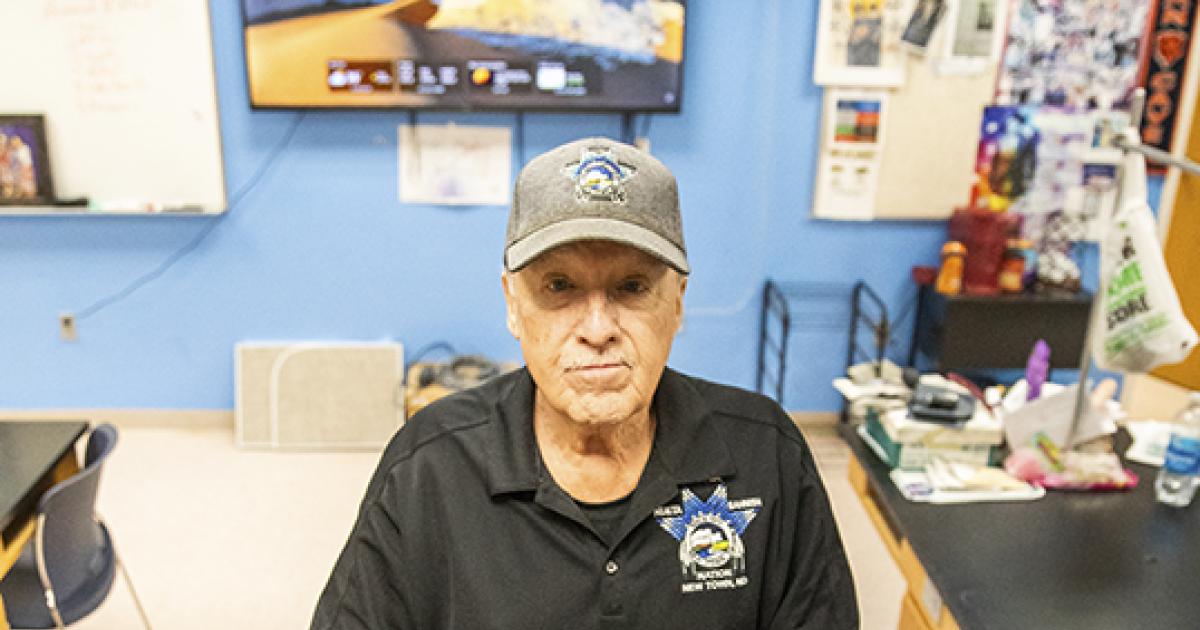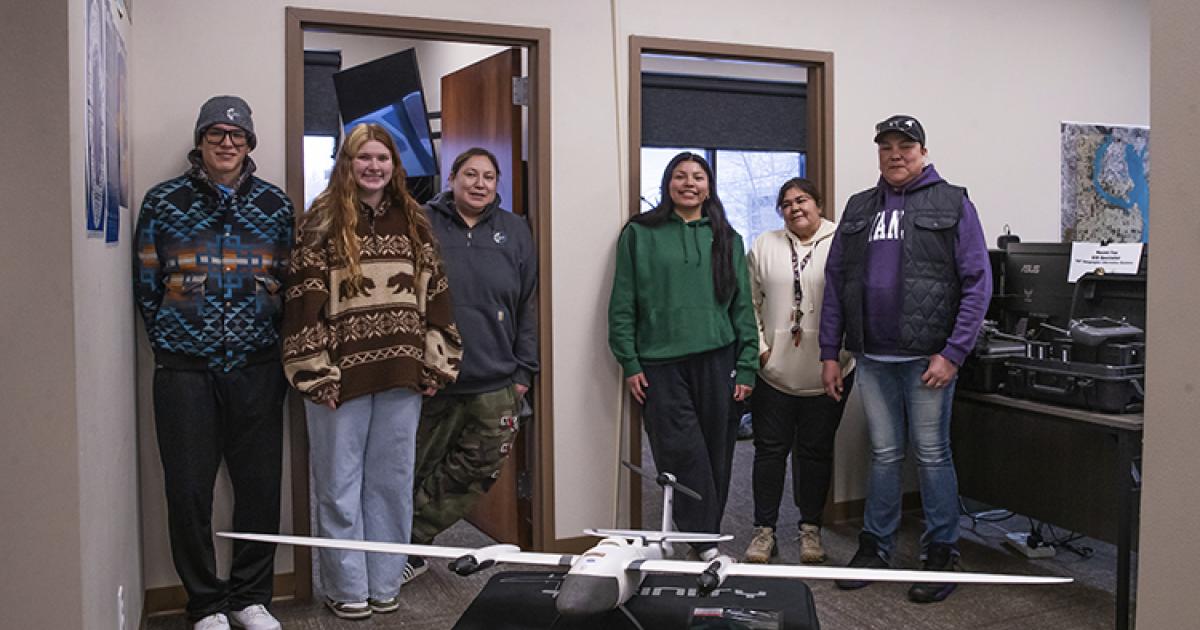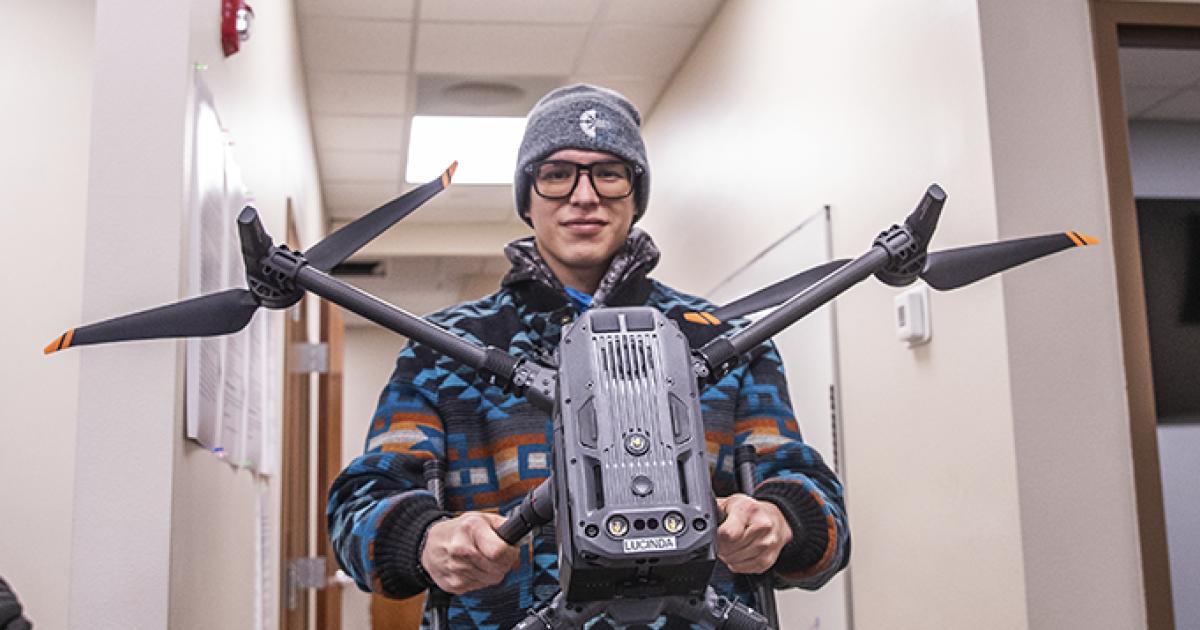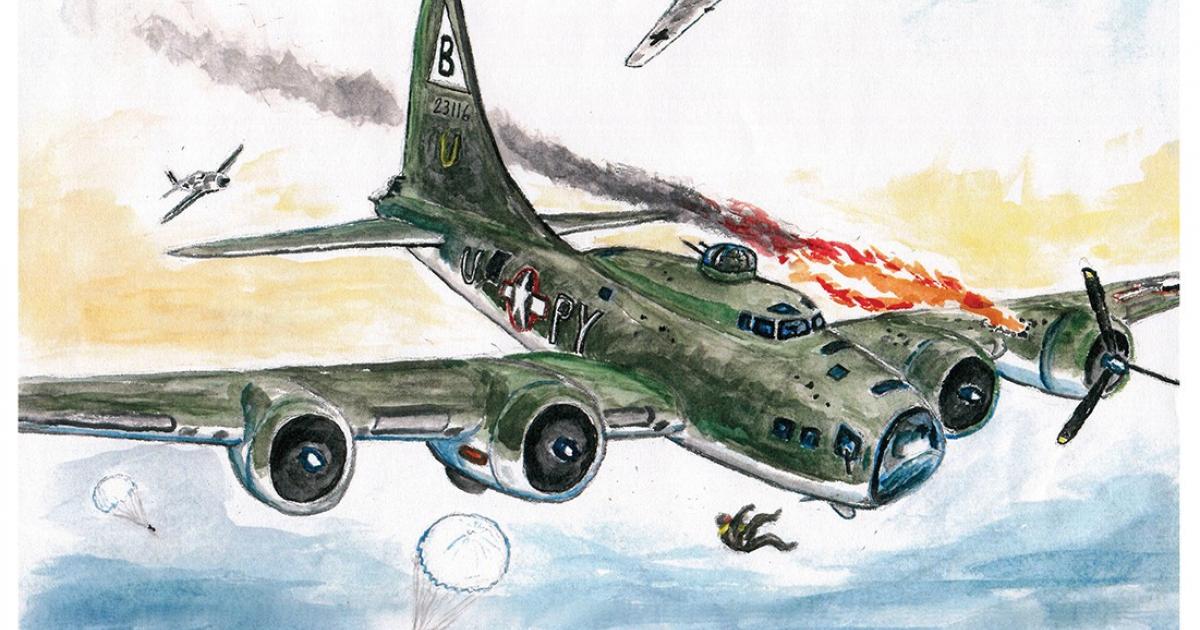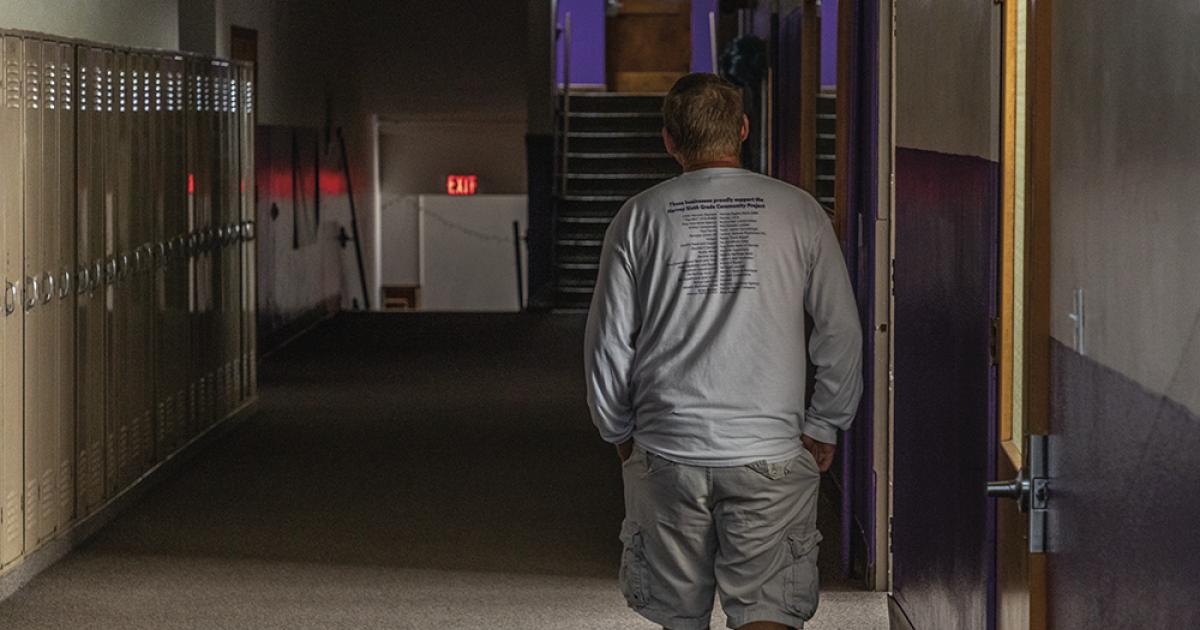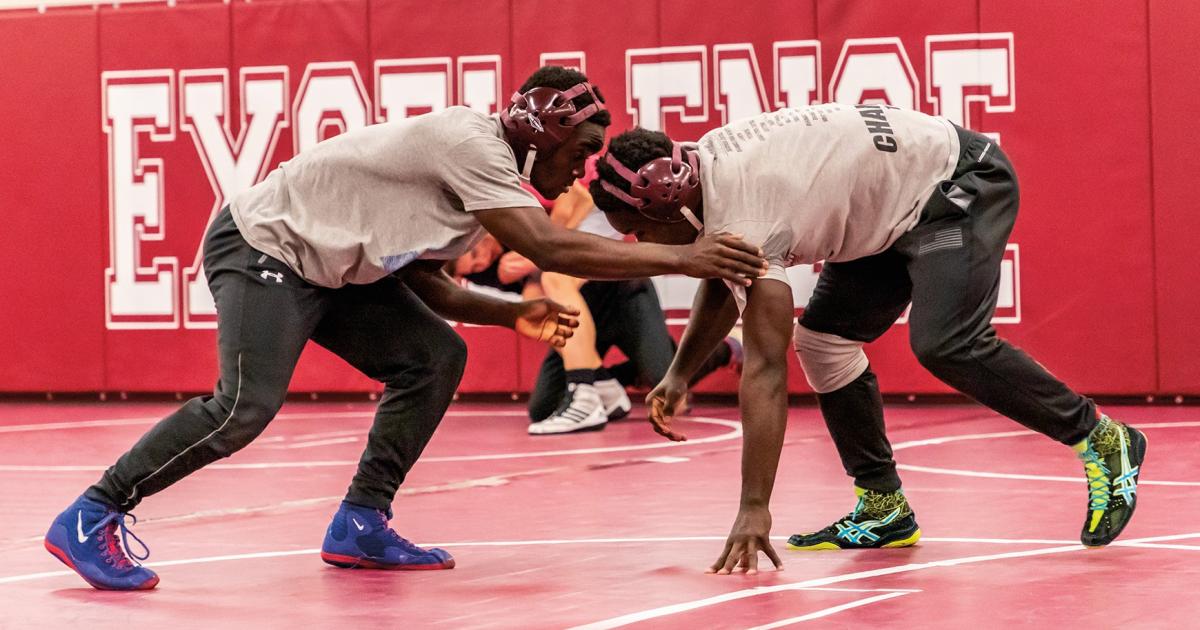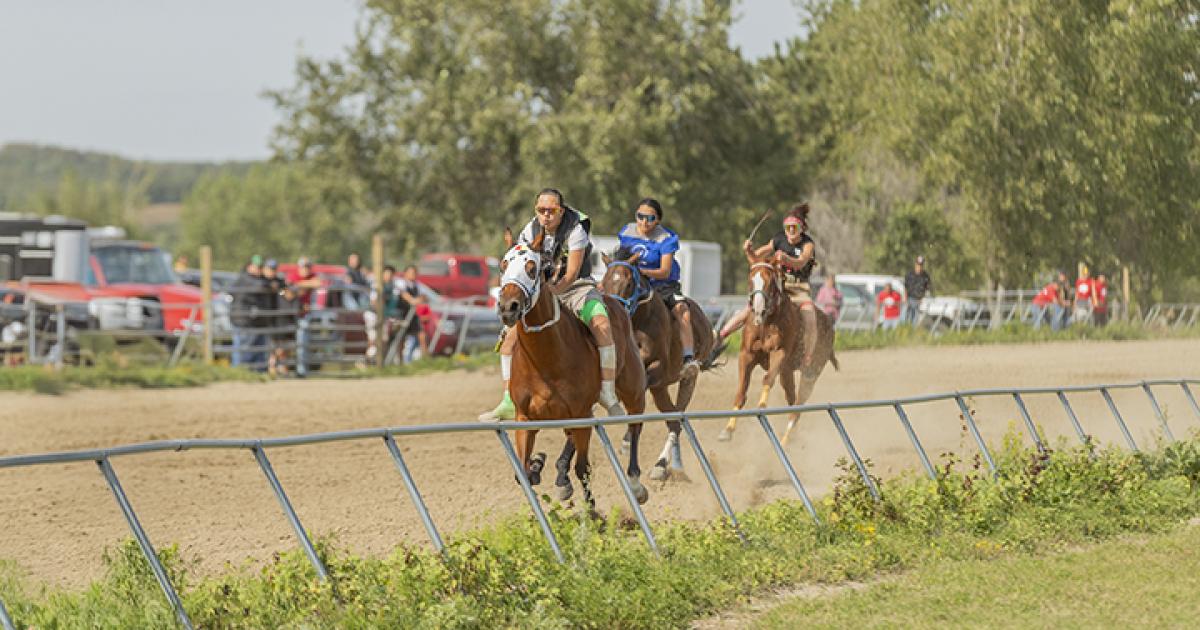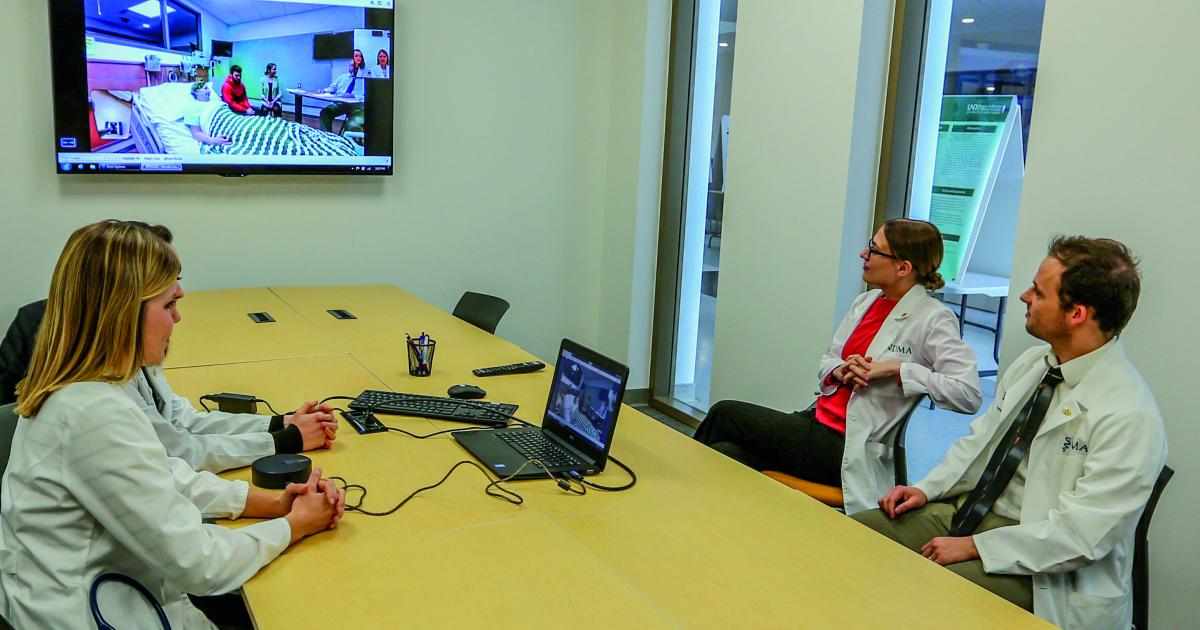Tribal college explores drone technology and training
Academic Dean and Environmental Science Chair Kerry Hartman is leading the MHA Drone Project for Nueta Hidatsa Sahnish College in New Town, which is exploring the use of drones to transport medicine on the Fort Berthold Reservation. Photos by NDAREC/ Kennedy DeLap
With technological advancements shaping the present and future, the Mandan, Hidatsa and Arikara (MHA) Nation in Fort Berthold is welcoming innovation and utilizing the tools it offers in a unique way.
The Nueta Hidatsa Sahnish (NHS) College in New Town, which is served by Mountrail-Williams Electric Cooperative, has partnered with the MHA Nation and the University of North Dakota (UND) on the MHA Drone Project. The initiative received nearly $2 million from the U.S. Department of Transportation’s Strengthening Mobility and Revolutionizing Transportation (SMART) Grants Program for the first phase of the project.
The project partners seek to demonstrate the use of unmanned aerial systems to address the growing need for access to medications and other lifesaving medical services in rural and remote places.
“The ultimate goal, of course, is to haul medicine,” says Kerry Hartman, academic dean and environmental science chair at NHS College and principal investigator for the drone project.
TAKING FLIGHT
The Fort Berthold Reservation is six counties wide, intertwined by two-lane highways often busy with semitrucks and oil traffic and dissected by the Lake Sakakawea reservoir.
Automobile travel and carpooling are the primary modes of transportation on the reservation, and with North Dakota’s unpredictable weather, roads can make trips to the clinic as dangerous as illness. But drones flying along a corridor between clinics in New Town and Twin Buttes – and potentially to rural and remote residences – to deliver medical supplies, insulin and other essential equipment could be a game-changer.
“Drones are such a good answer to many of the problems: bad weather, bad roads, time and money,” Hartman says.
Phase one of the MHA Drone Project began in March 2023 when the grant was awarded and focused on planning, community outreach, workforce development and proof-of-concept flights.
The first proof-of-concept flight occurred Sept. 17, 2024, along the approved corridor near the New Town pavilion to Twin Buttes. The tribal council approved the flight path, ensuring cultural sites, cemeteries and homes would not be disrupted. And the flight required prior approval from the Federal Aviation Administration (FAA) to go “beyond visual line of sight” or BVLOS.
BVLOS means the UAS operator does not have eyes on the drone and is relying on technology to navigate and monitor its location.
Receiving the FAA waiver was a big step for the project, Hartman says.
“Unless you get God or the FAA to say you can (fly BVLOS). God was busy the day we asked, so we ended up going with the FAA,” Hartman jokes.
The flight took 30 minutes – an hour and a half less than the time it would take to drive from New Town to Twin Buttes. According to a project report, the flight proved drones could be used successfully and the concept was scalable for future operations.
Another goal of the MHA Drone Project is growing and training a drone-savvy workforce. In collaboration with UND, NHS College plans to offer a nine-credit drone certification curriculum in 2025.
The college put on two drone camps last year, events aimed at inspiring UAS interest in local students to become future leaders of drone innovation.
Currently, the MHA drone advisory board is applying for a no-cost extension for phase one of the project to use the remaining SMART funds from the grant award. The group will then apply for phase two funding of $15 million over a five-year period to continue the project.
According to Hartman, the tribal council is supportive of the project, and while nothing is for certain, it is likely the MHA Nation will continue to fund the project regardless of the phase two grant funding.
Hartman hopes the next phase will bring a workforce of trained and licensed drone operators throughout the Fort Berthold Reservation and departments with drone procedures and protocols in each tribal community.
FLYING TOWARD THE FUTURE
The MHA Nation Geographic Information Systems (GIS) Department has been dabbling in drone use for years, prior to the MHA Drone Project getting off the ground.
NHS College alumna and Three Affiliated Tribes GIS and Water Resources Director Tanya Sand-Driver uses a swath of drones in her work. Initially inspired by her son’s drone, the department now has a fixed-wing drone, underwater drone and several other aerial devices. The department uses drones for mapping, noxious weeds, agriculture, livestock and fire applications. They can even look for missing people with infrared attachments on drone cameras.
Sand-Driver, who is also on the MHA drone advisory board, says the MHA Drone Project could expand the possibilities for UAS on the Fort Berthold Reservation and within the GIS department.
Other matters will have to be considered, too, including UAS infrastructure, laws and policy.
And while there are many miles to travel to realize their high-flying dream, the team is up for the challenge and focused on the good this project could accomplish.
Hartman has his eyes toward the skies – and the future.
“The application of this new, exciting, relevant, and economical way of transporting things and using aerial vehicles ... it‘s definitely the way of the future,” Hartman says.
___
Kennedy DeLap is interning with North Dakota Living. She can be reached at kdelap@ndarec.com.


